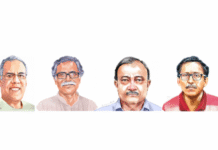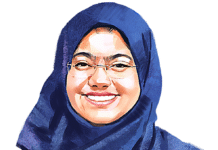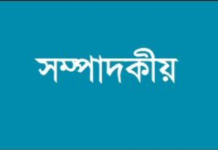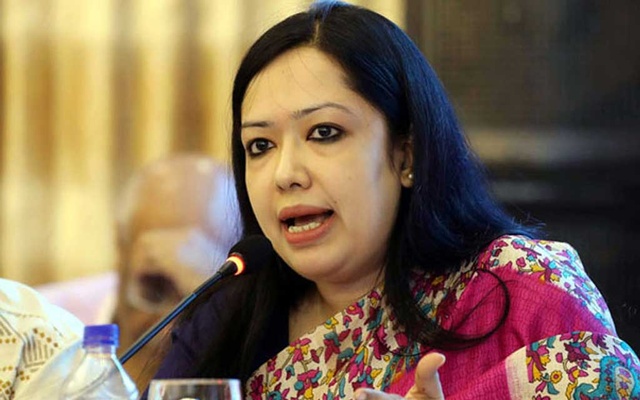
Last update on: Wed Aug 6, 2025 08:00 AM
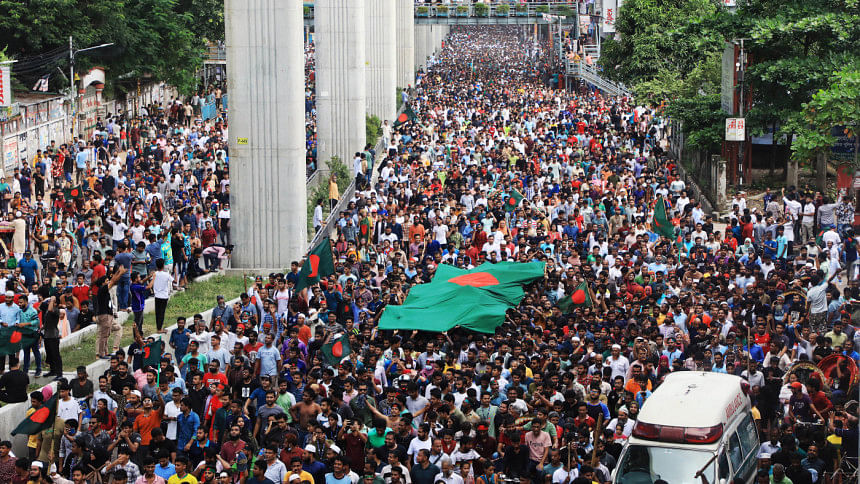
As we mark the first anniversary of the people’s uprising—led by the country’s youth, fondly known as Generation Z—it is clear that the greater task now lies ahead: rebuilding a nation with little preparation for the monumental responsibility. But then again, how could anyone truly prepare for an uprising of such magnitude, one that surged like a tsunami, defying all expectations?
Over the past 15 years, prior to the changeover, the opposition—most prominently the BNP—tried repeatedly, with meticulously crafted strategies, to unseat the regime. Yet none of their efforts could rival the spontaneous July-August uprising, which reshaped the political landscape in ways that no planned agitation ever could.
By systematically denying citizens their right to vote in three consecutive elections and holding power for fifteen years and seven months through sustained repression, Sheikh Hasina secured her place among the world’s most notorious autocrats. And yet, even her loyal Special Security Force (SSF) could not shield her from the force of a student-led uprising. One year ago, she fled the country and sought refuge in India. According to an SSF report (Ittefaq, September 3, 2024), on August 5, 2024, all SSF weapons and equipment were looted from four key installations, including the Gonobhaban and the Parliament building.
If that does not capture the scale of public fury, then consider the sheer intensity and toll of the 36-day movement that began on July 1. The trigger: a High Court verdict reinstating quotas for descendants of freedom fighters. Students swiftly took to the streets. On July 14, Sheikh Hasina dismissed the protests with a mocking question: “If the grandchildren of freedom fighters don’t get the quota, should it go to the grandchildren of razakars?” That night, campuses across the country erupted. Female students marched out of dormitories chanting: “Who are you, who am I? Razakar, razakar!” and “Who said it? Who said it? Autocrat, autocrat!”
The next day, the Chhatra League, the student wing of the Awami League, launched armed attacks on protesters, marking the start of widespread violence. On July 16, six protesters were martyred—including Abu Sayed in Rangpur and Wasim Akram in Chattogram. From that point on, the state and its affiliates unleashed a campaign of terror: curfews, internet shutdowns, mobile network restrictions, block raids, and mass arrests.
The United Nations Human Rights Commission documented these atrocities in its investigation. Their report placed the death toll at 1,400. Estimates about the injured vary, but it is no less than 10,000. More than 500 lost one or both eyes, others lost limbs. Among the dead were 133 children. The working class bore the heaviest losses. Yet the people persisted. After burying their dead, they returned to the streets, undaunted.
On July 19, student leaders issued a nine-point charter of demands. Momentum only grew. Across neighbourhoods and districts, students were joined by workers, professionals, and parents, but without any demand specific to their group interests. On August 3, a single, unified demand was declared: Sheikh Hasina must resign. That demand crystallised the birth of national unity. Even long-divided leftist and Islamist factions, previously unwilling to collaborate, stood together in a once-unthinkable alliance.
In the aftermath, the idea of a new nation—Bangladesh 2.0—has taken root. But what shape this new Bangladesh will take remains uncertain. Among idealistic youth, politically marginalised activists, romantic revolutionaries, and even anarchists, one point unites them: they refuse a return to autocracy. That was the soul of the one-point demand that toppled the regime. Yet, the question of what should replace it remains unresolved.
To find answers, the National Consensus Commission held 45 days of individual consultations with political parties, followed by 23 days of all-party dialogue. For a country long fractured by partisanship, the agreement reached on at least nine key points represents a historic step forward. Implementation will require legislation—and thus, time—but impatience is growing, and not without cause.
Some of the frustration lies with the interim government. Despite attempting many initiatives, its priorities have often seemed misaligned with public expectations. Worse, its communication failures have left many unaware of what, if anything, is being achieved. Only a handful of advisers appear visibly engaged; the rest remain anonymous and uninspiring.
In a country of 18 crore, chaos is always a possibility. But when a government seems unprepared, overwhelmed, or indifferent in times of crisis, trust begins to erode. People begin to question whether their sacrifice was in vain. After a revolution, the people need capable leadership. Inevitable comparisons arise between the new and the old: when the iron grip of autocracy gives way to apparent disorder, questions of competence cannot be avoided.
These are the challenges that must be met. And yet, the progress made in forging political consensus is no small achievement. If that momentum can be sustained, there is hope—real hope—that Bangladesh’s journey towards democracy can finally take root and flourish.
Kamal Ahmed is head of the Media Reform Commission in Bangladesh and an independent journalist. His X handle is @ahmedka1.
Views expressed in this article are the author’s own.

